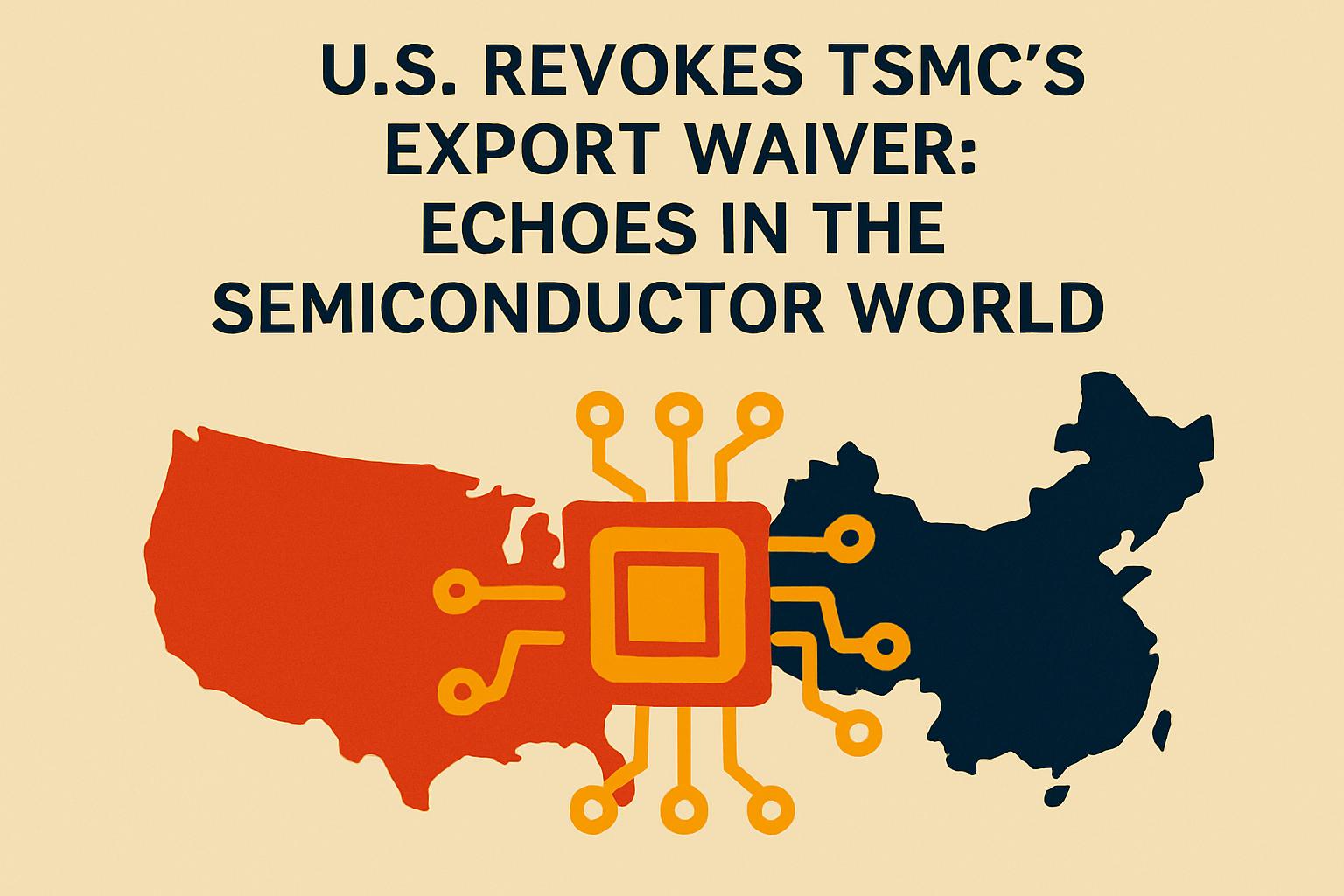The world of semiconductor manufacturing is no stranger to geopolitical tensions, and the latest move by the U.S. government to revoke TSMC’s export waiver is a testament to this ongoing saga. As of the end of 2025, TSMC’s Nanjing plant will lose its Validated End User (VEU) status, meaning its suppliers must navigate a more cumbersome export approval process for every shipment, a stark departure from the previous automatic passage.
Rising Tensions in the Global Semiconductor Arena
This decision underscores the escalating tension in the U.S.-China tech rivalry, sharply illustrated by the ongoing semiconductor restrictions. Previously, the U.S. had granted indefinite export waivers to major players like TSMC, Samsung, and SK Hynix, contingent upon compliance with cybersecurity requirements.
Under President Trump’s new administration, the approach has shifted dramatically. Bloomberg has reported that TSMC’s Nanjing facility will need to adapt to the loss of its VEU authorization, compelling the company to engage in ongoing discussions with U.S. officials while implementing strategic measures to minimize operational disruption.
Deciphering the Significance of VEU Status
The VEU authorization allows high-tech firms to bypass tedious export scrutiny processes, a critical advantage for fabs in need of timely imports of equipment and materials. The revocation of this status imposes a notable administrative burden on TSMC and its supply chain.
A Broader Clampdown: Not Just TSMC
The U.S. Commerce Department’s Bureau of Industry and Security (BIS) has also withdrawn similar waivers for other industry giants like Samsung and SK Hynix in China, aiming to patch ‘loopholes’ in the export control regime. While TSMC’s status change wasn’t publicly listed in the Federal Register, the company confirmed receiving formal notification.
The Impact on Suppliers and Operational Preparedness
For companies like Applied Materials, ASML, Tokyo Electron, and KLA that supply TSMC, the end of the waiver means a significant uptick in licensing paperwork. Industry insiders suggest that this policy shift could add thousands of licensure requests annually for companies like Samsung and SK Hynix alone.
Looking at Long-term Implications
Despite the added complications, Taiwan’s government reassures that the overall impact on TSMC’s competitiveness is manageable. The Nanjing plant represents only a small fraction—about 3%—of TSMC’s total capacity, focusing on the already mature 16-nanometer technology first harnessed in 2018.
While these geopolitical tremors may cause uncertainty around operational predictability, TSMC remains a formidable player in the global semiconductor landscape. As technology advances and markets evolve, the industry will undoubtedly continue to adapt to the shifting sands of policy and international relations.
For more on this evolving story, let’s keep an eye on how TSMC navigates these choppy waters, sustaining its pivotal role in the semiconductor supply chain.

![[News] Bitcoin at a Turning Point? 10x Research Signals a Bullish Macro Shift Ahead](https://cryptoexplores.com/wp-content/uploads/2025/06/new20250616.jpg)
![[News] Binance Lists $HOME, the Gas-Free, Bridge-Free All-in-One DeFi App](https://cryptoexplores.com/wp-content/uploads/2025/06/news20250617.jpg)